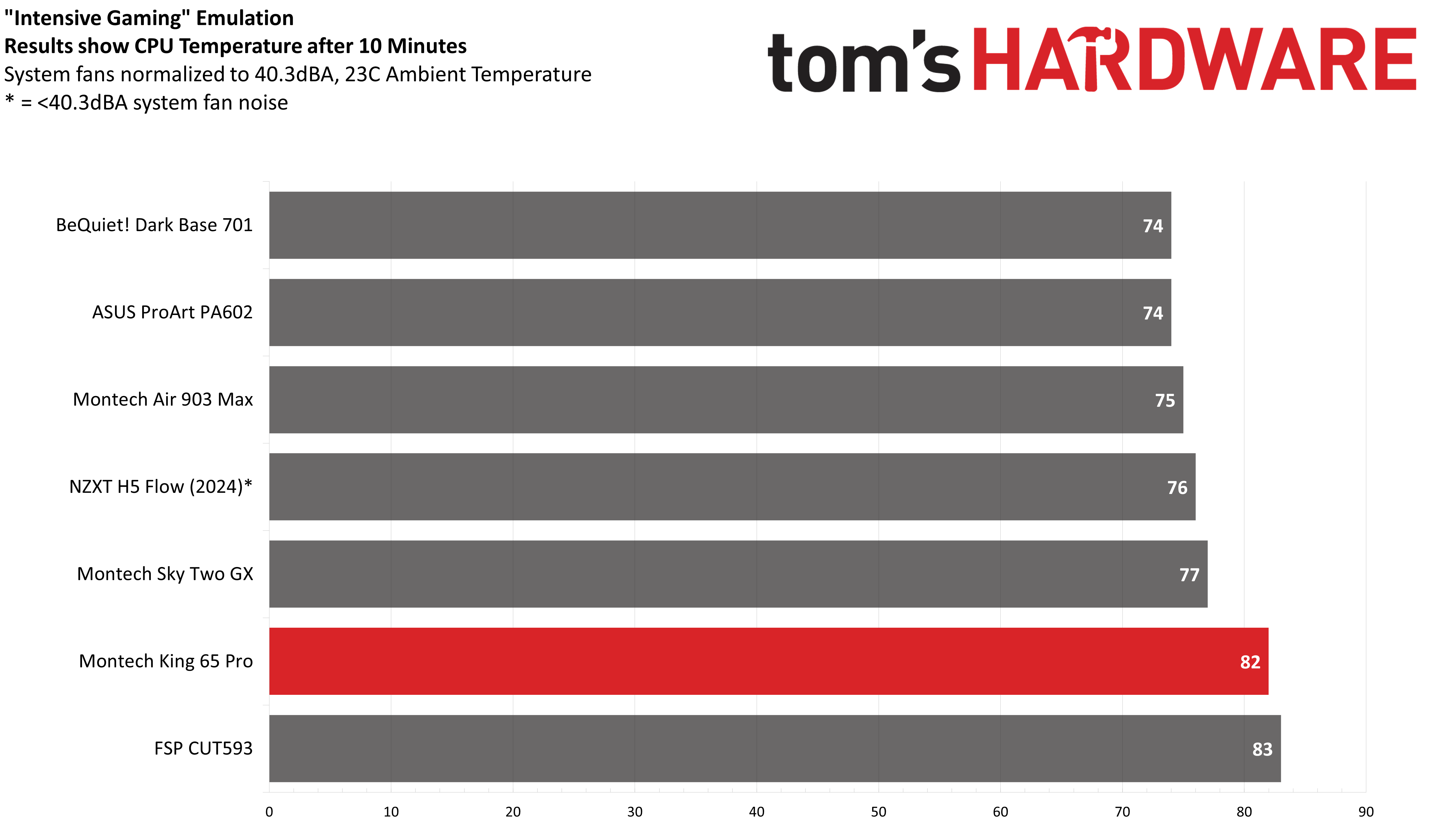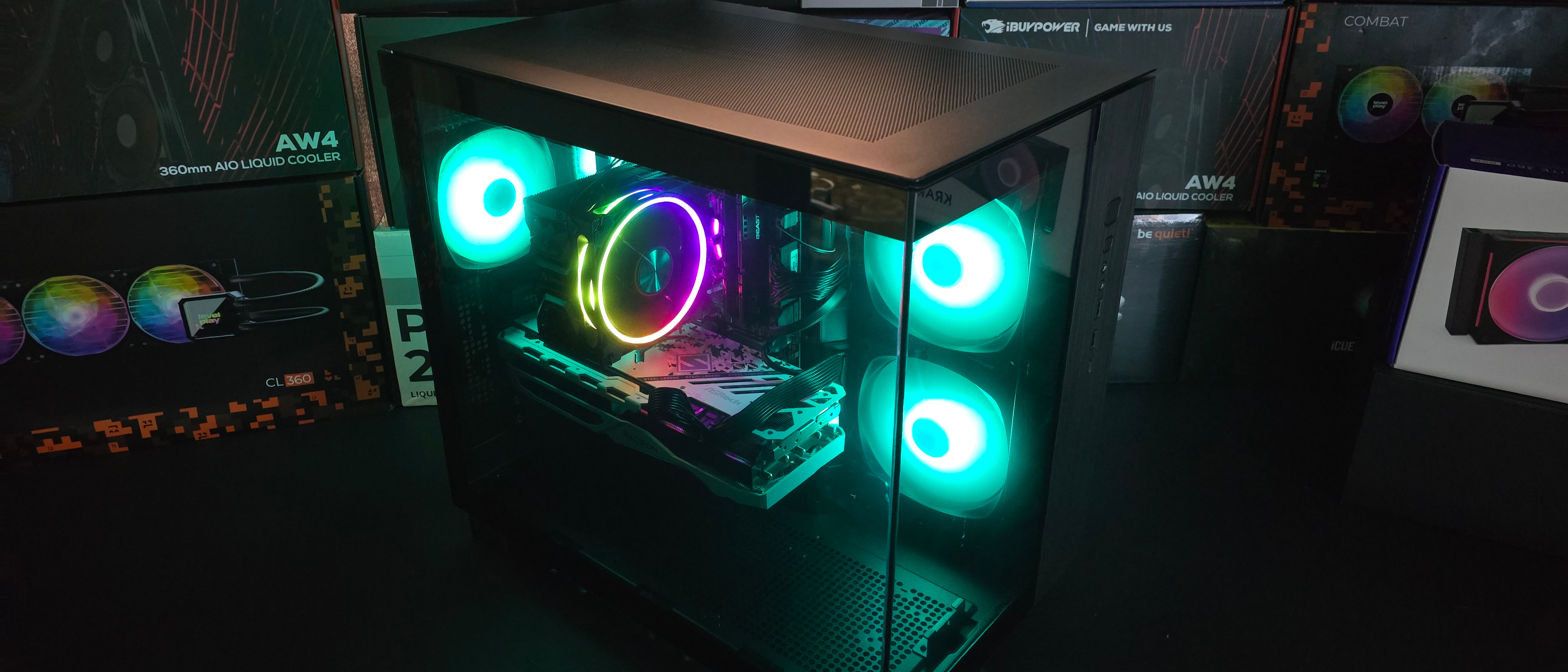Why you can trust Tom's Hardware
Noise Levels

The fans of the King 65 Pro reach up to 49.2 dBA at full speed. This is slightly louder than I prefer, but they’re PWM-controlled, so you can easily set them to run more quietly if you prefer.
Maximum Thermal Load – CPU Results
For this first test, I removed power limits from the Intel i9-14900K CPU and ran Cinebench R23 while also running Furmark 2 on the Radeon RX 7900 GRE GPU. This causes total system power consumption to reach around 600W.
This should be considered a “maximum performance” or “worst case” scenario.

During this test, where both the GPU and CPU are pumping heat into the case, the CPU consumed an average of 236.4 Watts. This isn’t exactly the best result, but keep in mind that the difference between 262W and 236W is only 11% in a theoretical worst-case scenario.
Maximum Thermal Load – VRM Results
Another way to judge this same scenario is by looking at the motherboard’s VRM temperatures. While the temperature of the CPU itself wasn’t impressive, the VRM temperatures were very good – though I have to wonder how much of that is due to the 11% lower CPU power consumption the CPU sustained.

Maximum Thermal Load – GPU Temperature Results

There’s not a big difference in the thermal performance of the GPU I’m using between cases. From best to worst there’s only a spread of 7.2 degrees C. I suspect that I would need a more power-hungry GPU to see a more significant thermal difference. In my tests running Furmark 2, the 7900 GRE GPU will use approximately 276W. However, in today’s market that is merely mid-range power consumption. Nvidia’s RTX 4090 will consume twice as much power in the same scenario. All that said, the Montech case delivered the worst GPU temperature result of all the competing cases I’ve tested here.
Maximum Thermal Load – Noise Normalized
For this next test, I’ve set the system fans to run at 40.3 dBA on cases with PWM control. I’ve also normalized the output of Akasa’s Soho H4 Plus, setting it to 76% - 40.9 dBA from one meter away.
Get Tom's Hardware's best news and in-depth reviews, straight to your inbox.
You can consider this a measure of the case’s efficiency when set to low noise levels.

Our CPU cooler was able to cool approximately 248W during this test. While this is technically at the bottom of our chart, keep in mind this is a small 4.8% drop in maximum theoretical cooling performance when using a low-end cooler while running Cinebench R23’s multi-core benchmark. This is a worst-case scenario, and realistically most users won’t notice a difference.
Intense Gaming Thermal Load
The last test I’ve performed for this review is to test the cooling with a moderately intensive gaming workload. For this, I’ve set the Intel i9-14900K CPU’s power consumption to 150W while running a full load on a Radeon RX 7900GRE GPU, which consumes approximately 276W. This is similar to what I’ve experienced with these components when playing Ubisoft’s Far Cry V.

The i9-14900K reached 82C, and the ASRock Steel Legend 7900GRE reached 67C at the end of this test. While this isn’t bad per se, it is again at the bottom of the chart of cases I have thus far – trailing the best competitor’s results by 7-8 degrees C.

Conclusion

Montech’s King 65 Pro offers a sleek dark aesthetic with tinted tempered glass and diffused lighting. Its thermal performance isn’t great, but the case carries a relatively moderate price of $99 USD and has good build quality. If temperatures are more important to you than aesthetics, you may want to consider Montech’s 903 Max or another high-airflow case instead.
MORE: Best PC Cases
MORE: Best Mini-ITX Cases

Albert Thomas is a contributor for Tom’s Hardware, primarily covering CPU cooling reviews.
